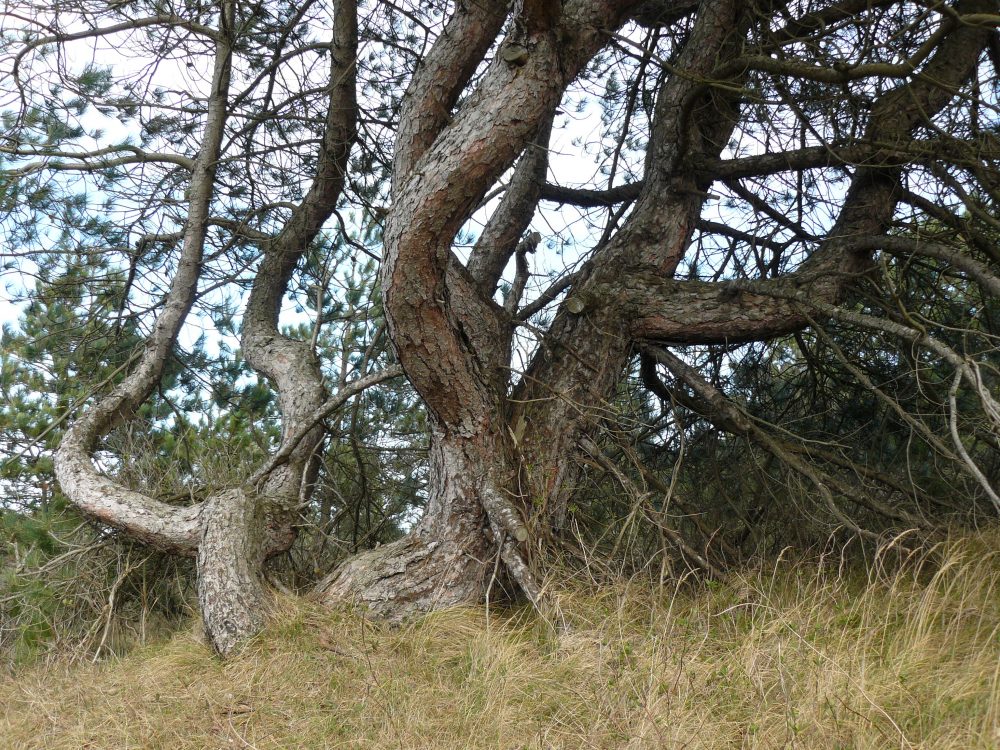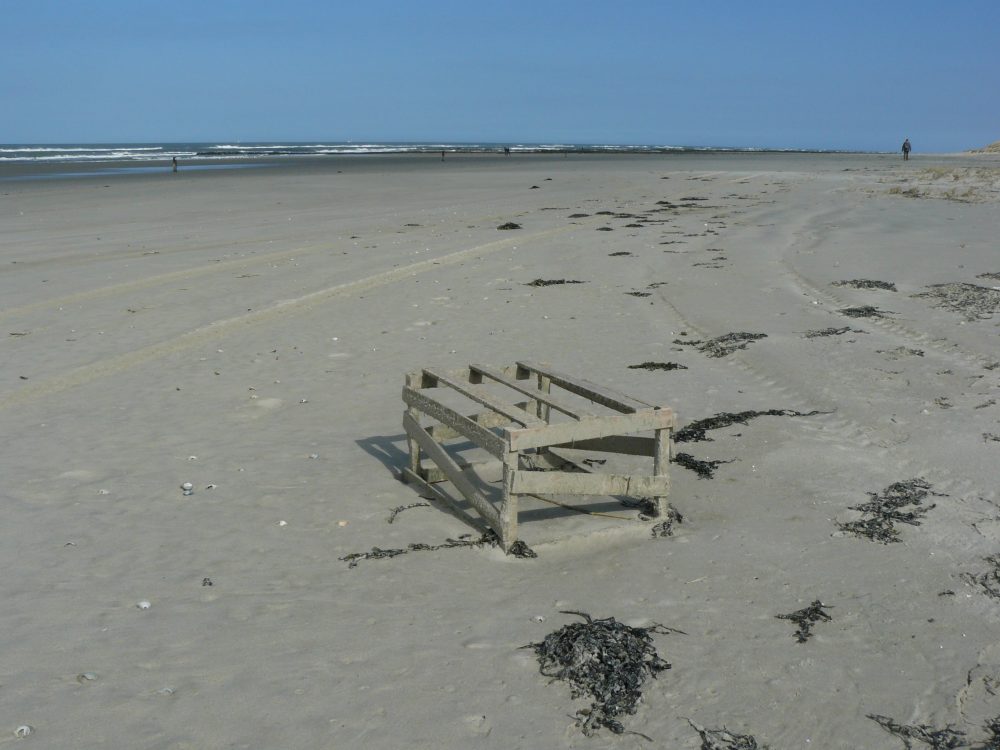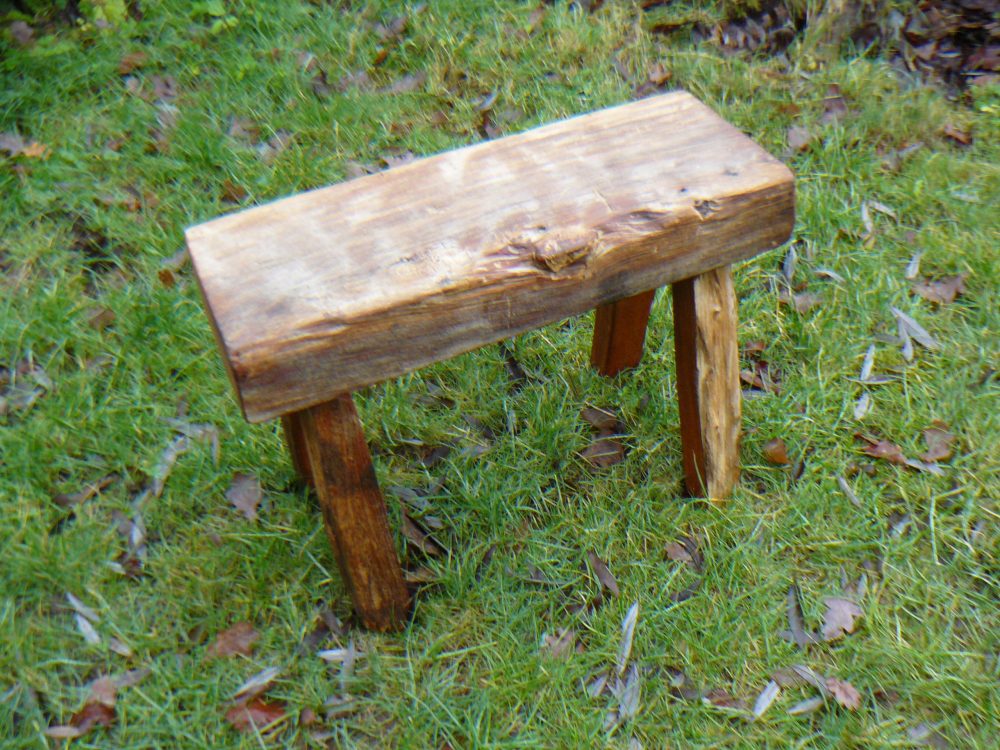On Vlieland
Otto Koedijk is a woodturner in Brummen, where he makes bowls, spheres, puzzles and play objects. He is also involved in exhibitions, projects and publications to make design in wood better known.

Once I heard a story about someone who lived in Amsterdam, found the place too crowded and wanted to emigrate to Canada. But during the preparation for his departure he thought: I have never been to a Wadden Island, let me visit Terschelling before I emigrate. He still lives there.

I once spent two summers on bird watch at Rottumerplaat, and there you can't help but be overwhelmed by the magic of the Wadden.
Yes, I find the Wadden Islands very special: the sea with its ebb and flow also determines the life, the sunsets are often spectacular and in some places in the Wadden Sea you can see 100,000 or 200,000 birds sitting together. Unique in the world. I have visited all inhabited islands in the Dutch Wadden Sea, and I have also been on Danish and German Wadden Islands. Once, I spent two summers as a bird watcher on Rottumerplaat, and there you cannot help but be overwhelmed by the magic of the Wadden, or rather, inspired by the drifting sand, the sucking mud, the inescapable wind and sun, the unusual plants and the enormous presence of birds. Later on, I spent two summers as a mudflat guide on the island of Vlieland, and since then I have been there at least once or twice a year. On Vlieland you have much more chance to meet people than on Rottumerplaat, but also on Vlieland you can walk for a long time and only hear wind and surf or only see rabbits and birds in the dunes. In short, if there is a moment that you only want to meet yourself, then that is possible on Vlieland. Fortunately Vlieland is a hospitable island with a comfortable boat connection.

From the window you can sometimes see eider ducks or spoonbills flying by and I have also seen seals swimming by.
Since the winter of 2019 there is a guesthouse for artists and researchers on Vlieland. Around 1900 a Norwegian painter, Betzy Berg, lived on Vlieland. In 1922 she died. The Museum Tromp's Huys, the place where she lived then, is partly dedicated to her work. Her studio in the back garden was later converted into a home, and now the Hendrick de Keyser Association has converted her studio into a guesthouse. With a view of the Wadden Sea. From the window you can sometimes see eider ducks or spoonbills flying by and I've also seen seals swimming by. In the summer season the house is for rent for tourists and in the winter the house is available for artists or researchers who do something with Vlieland. I was the fourth artist-in-residence and I stayed here March 2019.

You stick a shovel in the ground and you find history.
Between the garden of the Tromp's Huys and the lawn in front of the guesthouse, people from the village have their vegetable garden. I was allowed to pick as much kale as I wanted, so I ate kale more than once. I spoke to the gardener when he was digging. He told me that someone with a metal detector had found a gold coin at that very spot. He found only stones, he said with some regret in his voice. But you put a shovel in the ground and you find history. Residents know a lot about it and love to tell you about it. In the harbour you can push a button and hear the story of the English raid on Terschelling in 1666. If the wind had been different then, the village on Vlieland would have been burnt down and then Terschelling and Vlieland would look different now. That awareness of history, and how it is now a product of a wind direction then, or a storm or a change of climate, is something I have more of on the Wadden Islands than elsewhere. I suspect that the Norwegian painter Betzy Berg felt the same way over a hundred years ago. In any case she left us more than paintings of overwhelming cloudscapes.
 Through the website studiobetzy.nl you can get to the form to apply for a stay. My motivation was that I wanted to investigate the use of wood on Vlieland. (I filled that in and quickly got a positive response.) What grows there? And what happens to it? What washes ashore? And what happens to it? How much wood is used and where does it come from? Now I am a woodturner/designer, but I have also contributed to wood art exhibitions, projects and publications in the field of wood and design.
Through the website studiobetzy.nl you can get to the form to apply for a stay. My motivation was that I wanted to investigate the use of wood on Vlieland. (I filled that in and quickly got a positive response.) What grows there? And what happens to it? What washes ashore? And what happens to it? How much wood is used and where does it come from? Now I am a woodturner/designer, but I have also contributed to wood art exhibitions, projects and publications in the field of wood and design.
On Vlieland I felt I was not only a designer but also a researcher.
In my workshop I work alone, but it's of course great fun to work with like-minded colleagues on your profession. So on Vlieland I felt like a researcher as well as a designer. I walked through the woods and the beach, took photos and found beautiful pieces of wood on the beach. I want to make them into lamps and other objects. One of my beach finds was a porpoise skull. It had been floating in the North Sea for so long that it was almost transparent. I made a lamp out of it. And sold it at my first exhibition. The accommodation costs have already paid for themselves.
 I have spoken to many Vlielanders; builders and makers. My curiosity was appreciated beyond expectation, and everywhere there was coffee ready. Until halfway the last century barns were built with beachwood, wood for roofing or for a garden fence came from the beach. That can still be seen. And all the wood was collected and auctioned off once or twice a year. The proceeds were shared by the finder, the state and the beach warden - the mayor. Those proceeds used to be a substantial part of the mayor's income.
I have spoken to many Vlielanders; builders and makers. My curiosity was appreciated beyond expectation, and everywhere there was coffee ready. Until halfway the last century barns were built with beachwood, wood for roofing or for a garden fence came from the beach. That can still be seen. And all the wood was collected and auctioned off once or twice a year. The proceeds were shared by the finder, the state and the beach warden - the mayor. Those proceeds used to be a substantial part of the mayor's income.
My stay resulted in a presentation in the village cinema, with a lively discussion afterwards. I also wrote a number of articles for magazines, found beautiful pieces of wood to work with on the beach and of course gained a lot of inspiration from the Wadden Sea.
www.ottokoedijk-houtdraaier.nl
www.vormgevinginhout.nl
www.studiobetzy.nl


